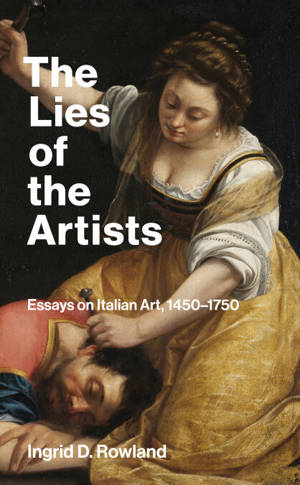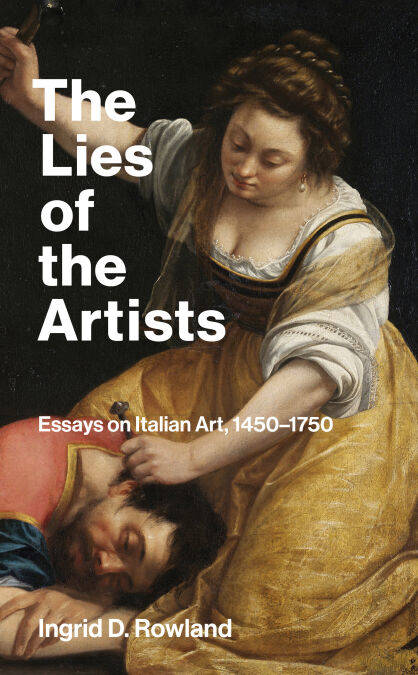
- Afhalen na 1 uur in een winkel met voorraad
- Gratis thuislevering in België vanaf € 30
- Ruim aanbod met 7 miljoen producten
- Afhalen na 1 uur in een winkel met voorraad
- Gratis thuislevering in België vanaf € 30
- Ruim aanbod met 7 miljoen producten
Zoeken
€ 34,45
+ 34 punten
Uitvoering
Omschrijving
Luminous essays on artists of the Italian Renaissance by one of our most inspired writers on the history and making of art.
In the three centuries from 1450 to 1750 painters, sculptors, and architects emerged from the medieval craft guilds of Italy to claim a new social status as creators, whose gorgeous handiwork, now called “art,” expressed lofty inspiration as much as manual skill. In The Lies of the Artists, Ingrid Rowland takes us into the world of these artists, and into their seemingly miraculous ways of transforming transcendent ideas into tangible works of art that challenged and redefined reality, “lies” with the power to reveal a deeper truth.
As the great art patron Daniele Barbaro wrote: “bisogna aprire gli occhi,” or “you have to open your eyes.” And this is precisely what Rowland does in these essays, bringing her knowledge, keen perception, and singular wit to bear on the art and lives of Renaissance masters, including Michelangelo, Caravaggio, Bernini, Raphael, Titian, and El Greco, as well as some overlooked artists of phenomenal talent, such as Antonello da Messina, Andrea del Sarto, and Bertoldo di Giovanni. In dazzling prose, as luminous and versatile as the painterly effects she describes, she shows us the work of these artists in eye-opening, thought-provoking ways, recreating the delight and insight that the discovery of great art evokes.
In the three centuries from 1450 to 1750 painters, sculptors, and architects emerged from the medieval craft guilds of Italy to claim a new social status as creators, whose gorgeous handiwork, now called “art,” expressed lofty inspiration as much as manual skill. In The Lies of the Artists, Ingrid Rowland takes us into the world of these artists, and into their seemingly miraculous ways of transforming transcendent ideas into tangible works of art that challenged and redefined reality, “lies” with the power to reveal a deeper truth.
As the great art patron Daniele Barbaro wrote: “bisogna aprire gli occhi,” or “you have to open your eyes.” And this is precisely what Rowland does in these essays, bringing her knowledge, keen perception, and singular wit to bear on the art and lives of Renaissance masters, including Michelangelo, Caravaggio, Bernini, Raphael, Titian, and El Greco, as well as some overlooked artists of phenomenal talent, such as Antonello da Messina, Andrea del Sarto, and Bertoldo di Giovanni. In dazzling prose, as luminous and versatile as the painterly effects she describes, she shows us the work of these artists in eye-opening, thought-provoking ways, recreating the delight and insight that the discovery of great art evokes.
Specificaties
Betrokkenen
- Auteur(s):
- Uitgeverij:
Inhoud
- Aantal bladzijden:
- 184
- Taal:
- Engels
Eigenschappen
- Productcode (EAN):
- 9780262379946
- Verschijningsdatum:
- 16/12/2024
- Uitvoering:
- E-book
- Beveiligd met:
- Adobe DRM
- Formaat:
- ePub

Alleen bij Standaard Boekhandel
+ 34 punten op je klantenkaart van Standaard Boekhandel
Beoordelingen
We publiceren alleen reviews die voldoen aan de voorwaarden voor reviews. Bekijk onze voorwaarden voor reviews.











